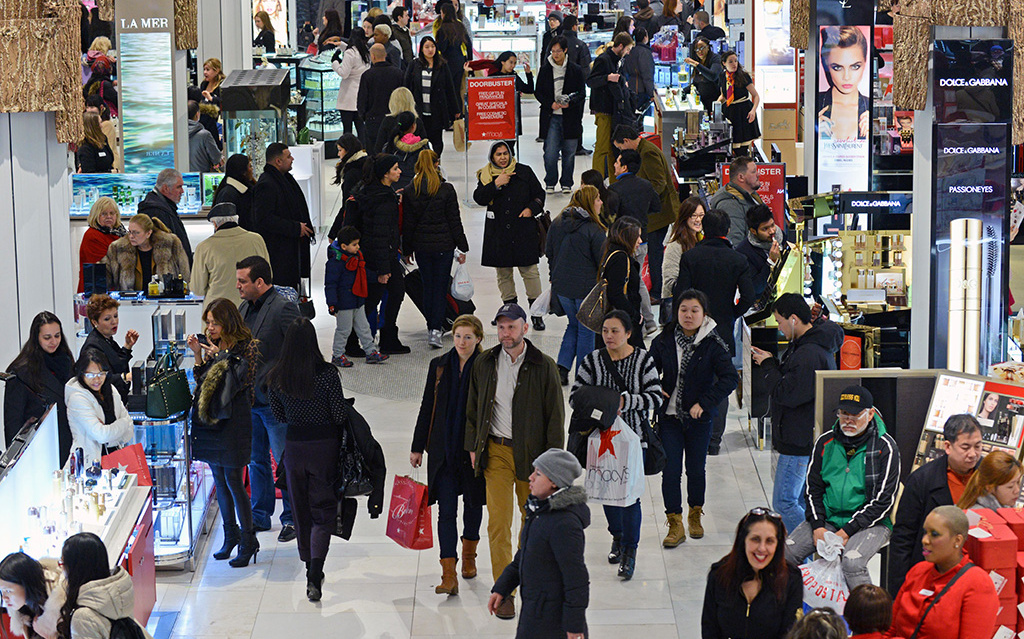
The unofficial kickoff to the summer season, Memorial Day weekend is often marked by family gatherings, backyard barbecues, visits to the park and shopping at local malls.
However, as the coronavirus pandemic takes a hold on the United States, these pastimes — the latter in particular — has been altered for the foreseeable future: Popular retail trends as we know it have now been upended by measures implemented to help stem the spread of COVID-19, which has sickened more than 1.58 million people in the country and led to at least 95,200 deaths as of Friday.
As they return to stores, consumers are expected not only to have safety top of mind, but also limit their discretionary spending and keep their shopping destinations local. Heres the break-down the popular retail features customers won’t find when they hit shops this holiday weekend.
Fitting rooms
Although a number of big-name retailers have opened up their doors to the public, fitting rooms have largely remained cordoned off to shoppers. Nordstrom, Macy’s and Saks Fifth Avenue are among the retailers that have either announced or reportedly indicated that they would “quarantine” items that have been tried on by consumers, while others — including Target and Urban Outfitters — have outright banned the use of fitting rooms.
According to the National Institute of Allergy and Infectious Disease, some viruses can stay active up to three days on plastic and stainless steel. On cardboard, it can survive up to 24 hours. Some apparel and accessories can feature buttons, zippers and other devices made from materials such as plastic and stainless steel, which could potentially transmit the coronavirus.
Cash payments
Shoppers who return to stores this weekend might be wary of trying on — let alone touching — merchandise that has come into contact with other people. Retailers are also seeking to reduce the risk of COVID-19’s transmission: Many stores have advised customers against paying in cash or even using credit-card terminals that could ask them to input their personal identification numbers or scribble their signatures on touch screens.
As such, some retailers and even landlords — including America’s largest mall owner, Simon Property Group — have encouraged the use of contactless payment methods, such as Apple Pay and Google Pay. New research from American Express shows that 58% of consumers who have used contactless payments in the past say they are more likely to use them now than before the outbreak.
Standard return-and-exchange policies
Prior to the pandemic, a number of retailers already offered generous return and exchange policies, giving customers the gift of a hassle-free shopping experience — particularly during holiday seasons. Now, many have extended their return windows beyond the usual 30 days.
Shoe chain DSW, for example, is accepting returns within 90 days from the date of purchase with a receipt, while department store Macy’s is providing an additional 60 days from the original return date, making most items eligible for return within 150 days. Even e-commerce businesses are giving customers more time to return purchases — partly to ease the burden on their overextended warehouses.
Crowds
Long gone is the rush of crowds often associated with discounts and markdowns on retail holidays: The coronavirus has effectively canceled the tradition of queuing up to get into stores and rummaging through bins to score deals.
Instead, a number of retailers have adjusted their floor plans to accommodate social distancing guidelines and prevent tight or cramped spaces. To reduce human-to-human contact, shoppers have been asked to use designated curbside parking spots at malls to pick up their orders. Plus, in order to cut back on the time customers spend in stores, some retailers have resorted to appointment-based shopping services, which would require visitors to sign up for a time slot through a brand’s website, mobile app or a phone call before stopping by their stores.